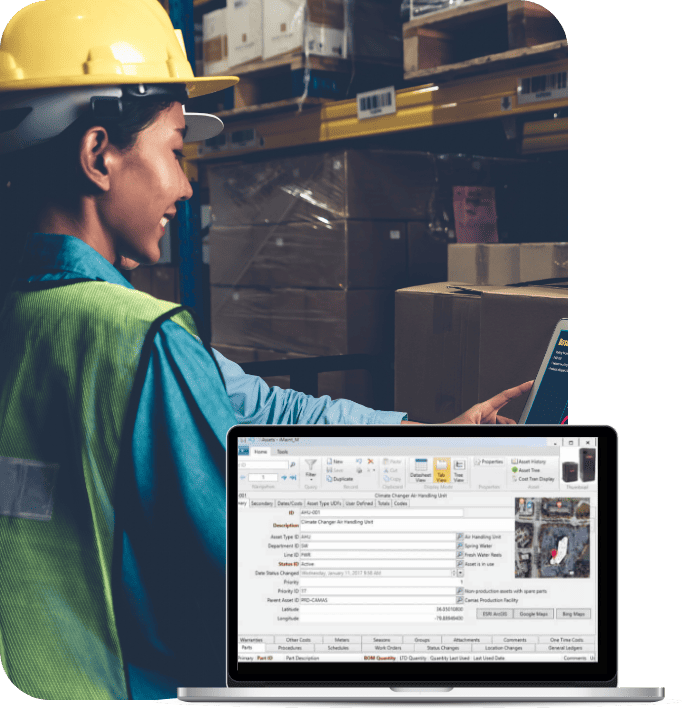How to Create and Implement an Asset Management Strategy
An asset management strategy is a high-level but very important…
Text goes here and is here for the text.Usually3 lines of text.
Text goes here and is here for the text.Usually3 lines of text.
Text goes here and is here for the text.Usually3 lines of text.
Text goes here and is here for the text.Usually3 lines of text.
Text goes here and is here for the text.Usually3 lines of text.
Text goes here and is here for the text.Usually3 lines of text.
Text goes here and is here for the text.Usually3 lines of text.
Text goes here and is here for the text.Usually3 lines of text.
Text goes here and is here for the text.Usually3 lines of text.
Transform your maintenance operations with our computerized maintenance management system.
Boost productivity by extending the iMaint features to your mobile device.
Connect with ERP, PLC and parts management systems.
Streamline and automate the maintenance and asset management processes with work order management.
Optimize the maintenance process with scheduled preventative maintenance.
Reduce downtime and lower costs with effective asset management.
Manage parts, and avoid delays with proper inventory management.
Track, monitor and control maintenance project expenses.
Utilize data analytics and reporting to make better maintenance decisions.
Text goes here and is here for the text.Usually3 lines of text.
Text goes here and is here for the text.Usually3 lines of text.
Text goes here and is here for the text.Usually3 lines of text.
Text goes here and is here for the text.Usually3 lines of text.
Text goes here and is here for the text.Usually3 lines of text.
Text goes here and is here for the text.Usually3 lines of text.
Text goes here and is here for the text.Usually3 lines of text.
Text goes here and is here for the text.Usually3 lines of text.
Text goes here and is here for the text.Usually3 lines of text.
Learn about DPSI, the DPSI Difference and how we ensure your long-term success.
Delve into our customer testimonials and product reviews.
Get your questions answered – contact us.
Explore our library of customer success stories and case studies.
Investigate the latest industry updates, tips, news and more.





An asset management strategy is a high-level but very important…
A maintenance policy defines your approach to maintaining a particular…
Dive into our CMMS software with our sales team to view user interface, features, options and customization abilities.
Schedule a CMMS demo to dive into our software interface, features, options and customization abilities.